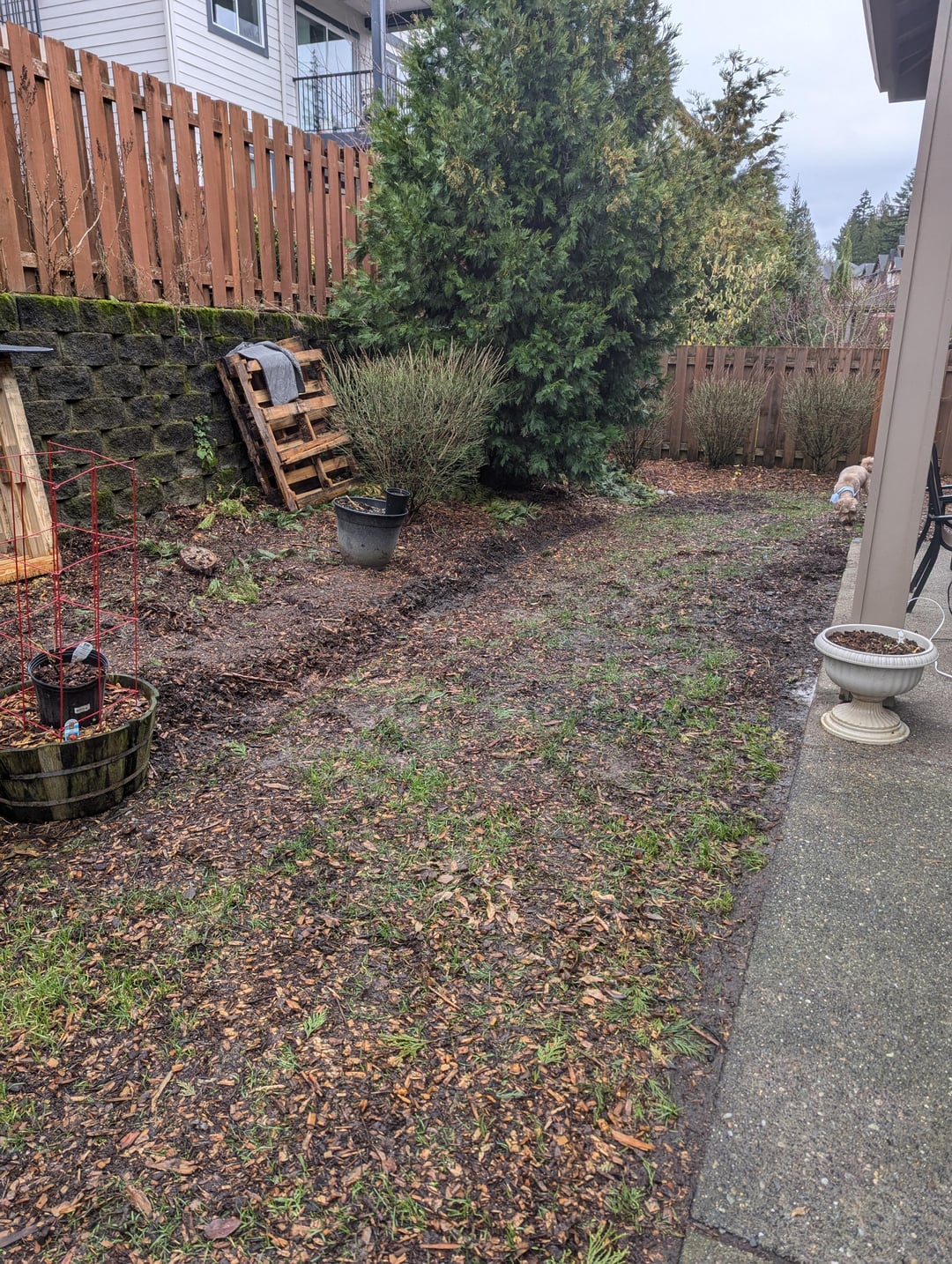
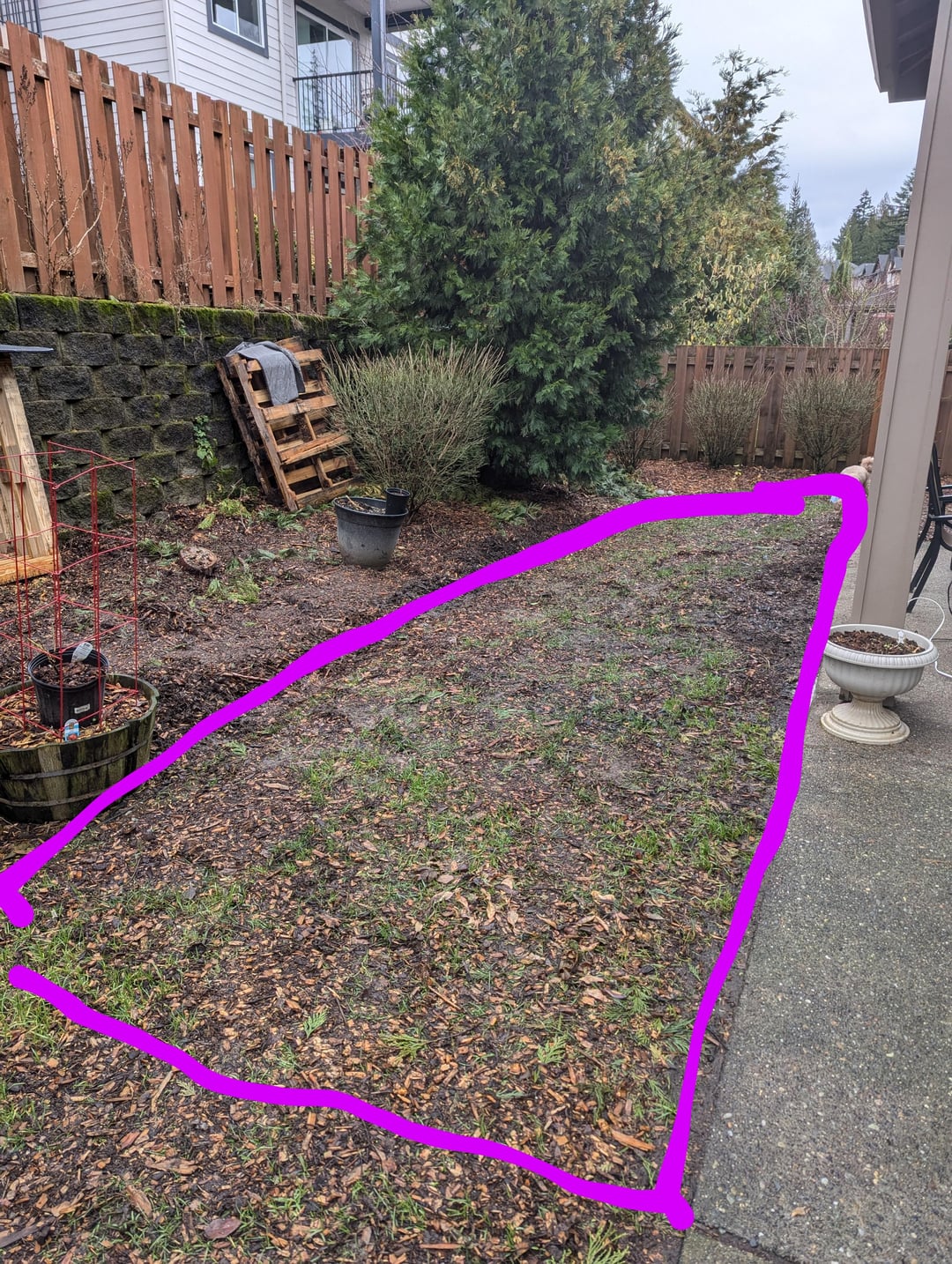
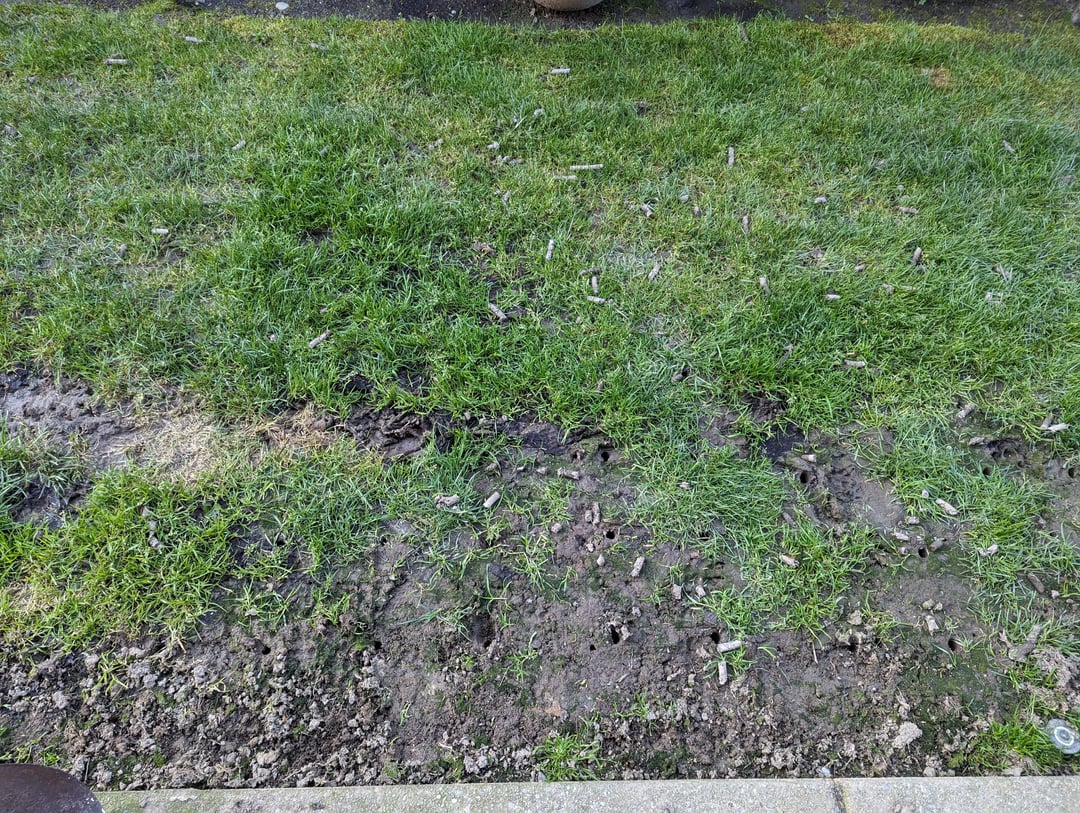

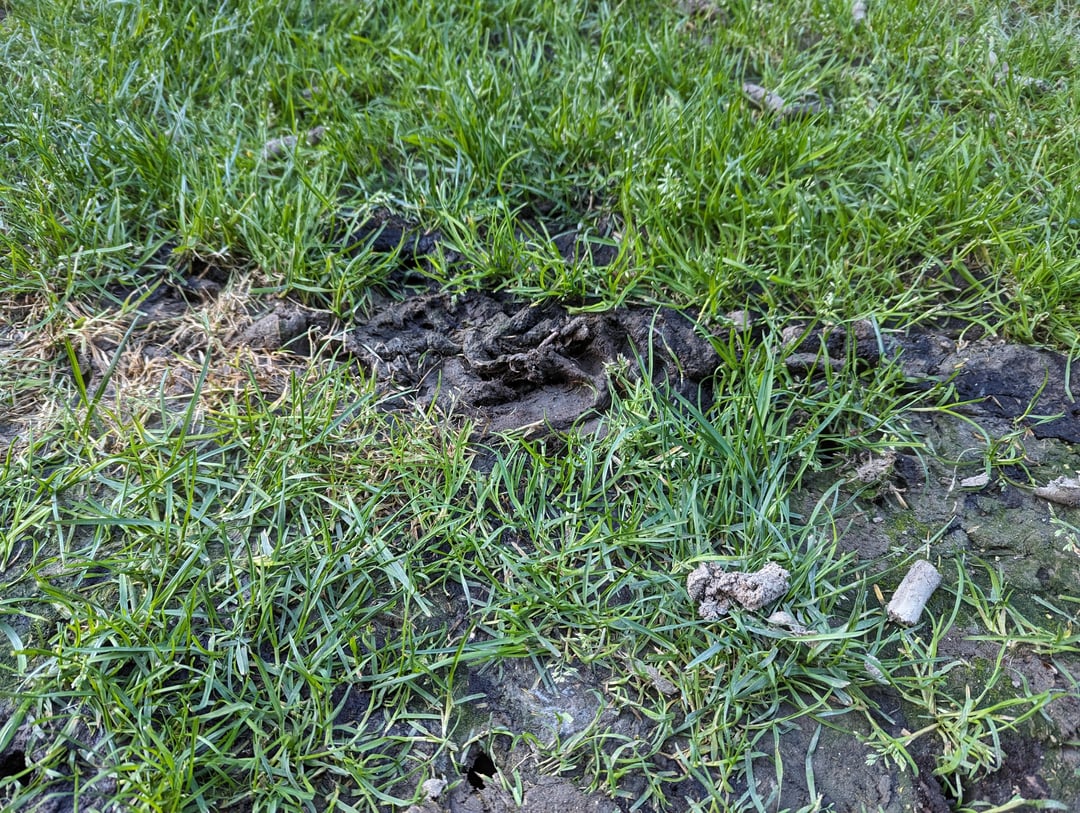

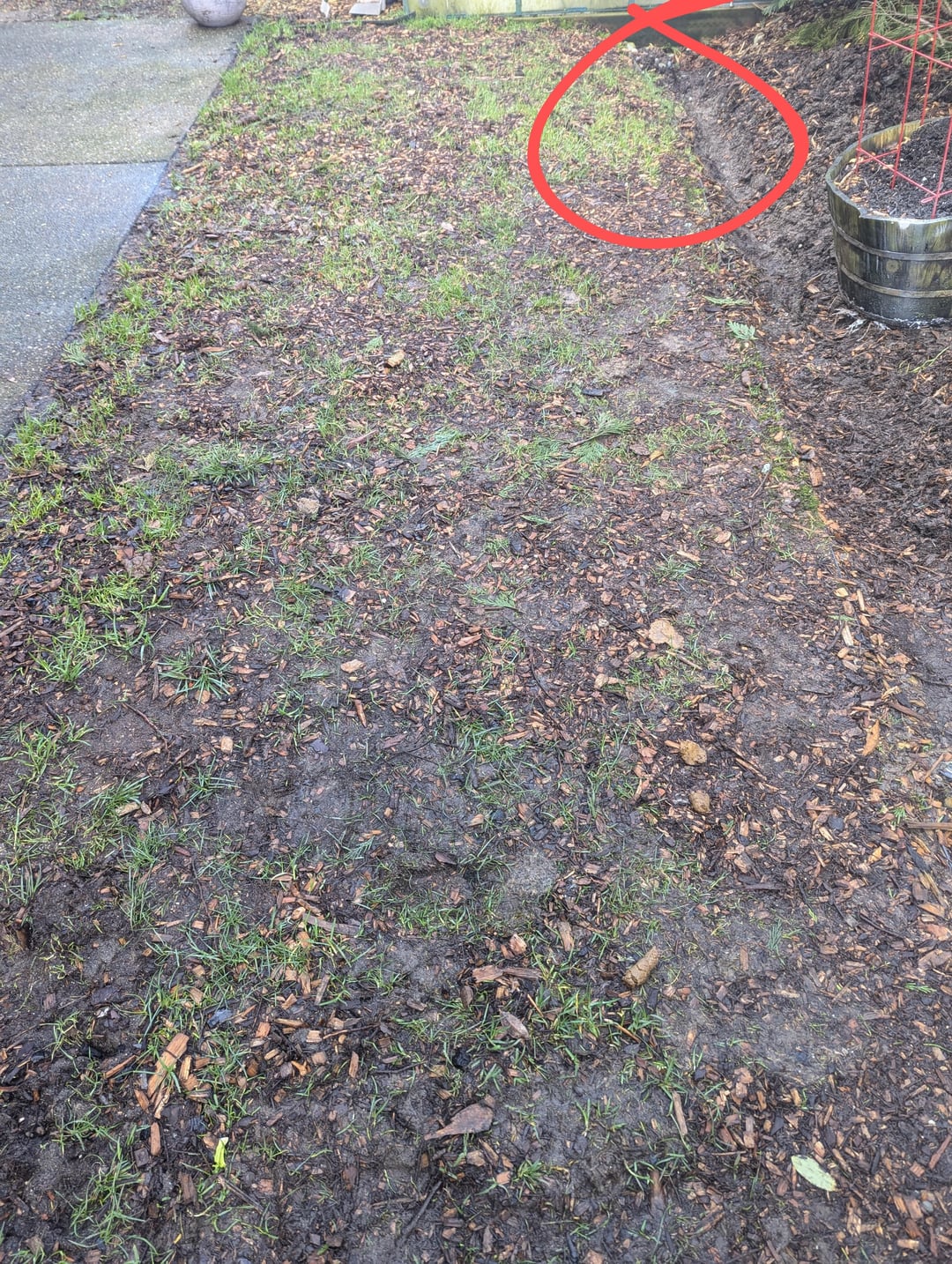
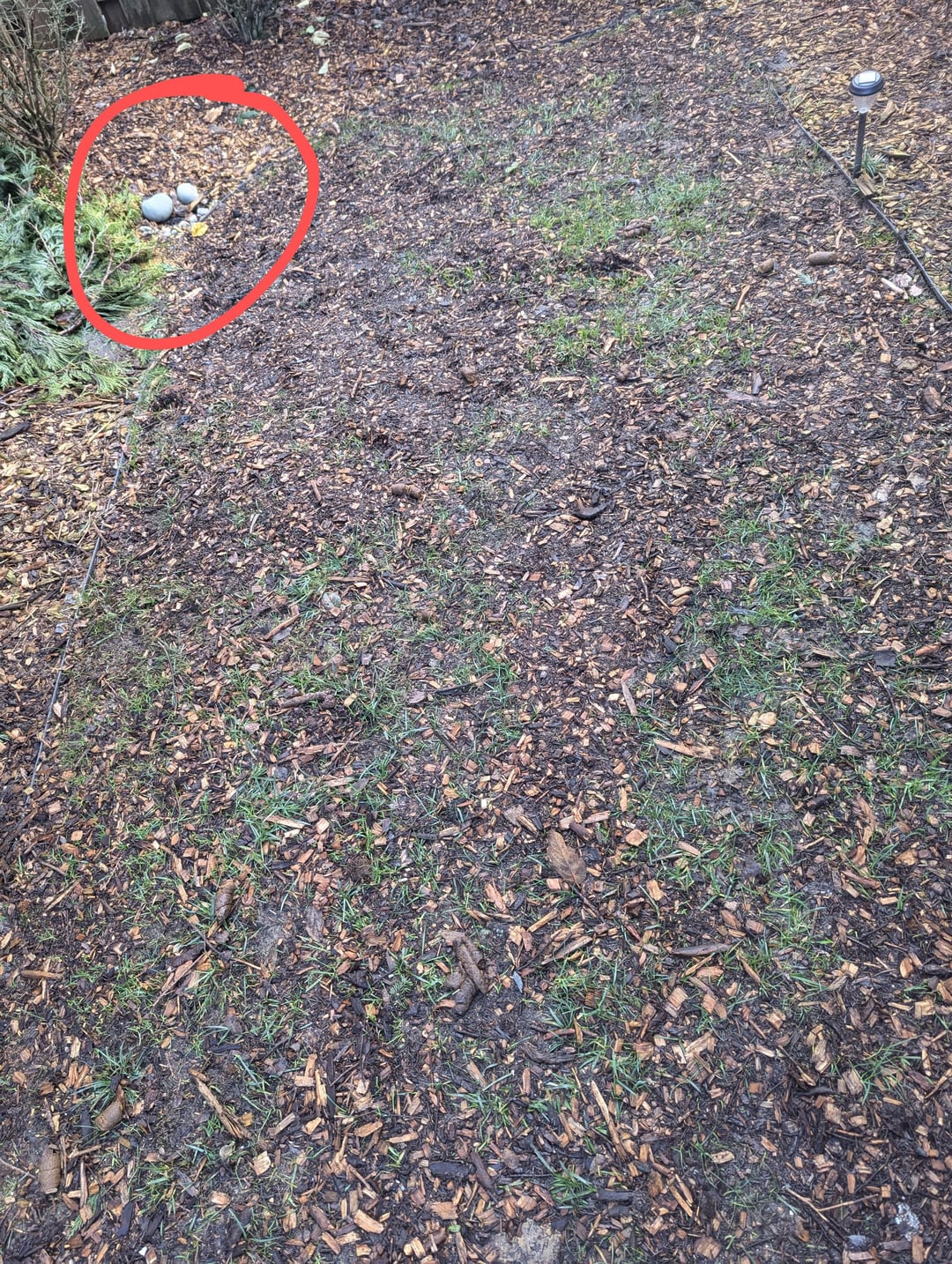
Hello,
I am trying to fix my lawn over the next year before I move out of this place and I've tried researching over the Internet but there is so much different information that I'm starting to get analysis paralysis. I thought it would be a good idea to ask for opinions on my specific situation and see if anyone could point me in the right direction or correct some errors in my plan. Also, an obligatory apology for the rough formatting since I'm posting from my phone.
Important info:
-Three dogs in the house
-Located in the PNW (specifically the greater Seattle area)
-The lawn is on the North side of my house so not a lot of sunlight exposure
About the lawn:
I've lived here for 6 years but have only been in charge of taking care of the lawn for almost a year. Since I've lived here, the lawn has consistently had drainage issues. During the winter, it's a squishy and swampy mess. When it rains, the water will pool up in some places.
The dogs in my house are primadonas and don't like to play on the lawn since they'll get dirty and don't like being wet. They do however urinate and dedicate consistently on the lawn and I'm assuming that's where a decent amount of damage is coming from.
There are wood chips everywhere from a batch of compost that wasn't sifted and while it's ugly and probably not ideal it has actually helped prevent sinking into the mud.
My current plan:
Currently, my plan is to fence off a majority of the lawn to keep the dogs off and away from it while leaving a smallish patch for them to do their business. The small patch I'll leave for them is the part of the lawn that doesn't have drainage issues, doesn't have a lot of wood chips, and still has a decent amount of dormant grass. I chose this patch since theoretically it should be easier to fix after the rest of the lawn is repaired. For the rest of the lawn I plan on following the Home Depot guide to sodding a lawn.
The question I still have is, how do I fix the drainage in my lawn and prevent it from returning to it's muddy state? I have two drainage grates in the lawn on each side of the lawn. Will a trench/trough connecting them help?
Photos:
1. Lawn in it's present state
2. Where I plan to install the temp fence to keep dogs out
3. Close up picture of the lawn last spring
4. Zoomed out picture of the lawn last spring
5. Close up example of the swamping from last spring
6. Other close up example of a problem area
7. Location of one of the drainage grates
8. Location of the other grate
If you've read this far, thank you for your time!
by thewless


3 Comments
Just curious, are you doing this for fun? Could end up being a lot of work for a place you’ll be moving out of in 1 year.
If you just want go get something down quick for erosion control/ spruce it up a bit you might seed with a dense shade mix in the spring (like late April) and just expect it not to turn out super good. Spring seeding is inherently more tricky than fall for several reasons.
I don’t have experience with putting down sod but I would think it’s also better to do in the fall.
Based on how it looks now, if you just start following a regular basic lawncare program starting in the spring (proper mowing, watering, fertilizing, etc) plus attempt a seeding for good measure, I bet it would thicken up quite a bit. Not sure what the weather is like near Seattle right now but near Portland it’s been pretty dry which would be a great time to get out and lightly rake up some of those chips.
Since you’re moving soon I’d recommend against going all out. Establishing a really nice lawn is often at least a couple years process in my experience.
I think the drainage issue would be hard to correct quickly. Looks like you might have some overflow from the gutters which wouldn’t help but I’m not sure.
Aerate. Aerate. Aerate!
“Don’t Panic” 😎 (Douglas Adams)
I have four ideas for you.
1- do it slowly. Gardens develop over time. They are dynamic: ever changing.
2- Research: Plants: find out what your “local plants” are ie. what grows naturally in your area. Local plants encourage wildlife and grow easily. Include your favorites though, a mix of endemic and exotic works well.
Soil: work out what your soil’s properties are such as how sandy it is and it’s pH. You can ask at your local garden centre if stuck for advise.
3- start with paths. Plan your path well- grow the garden around it. Make the garden full but accessible. Include whatever structures your going to use the garden for such as sitting areas or fire place or bbq.
4- when planting, start with the tallest canopy layer first. Plants grow in all different shapes and sizes… aim for roughly three layers: small tree, shrub and ground cover.
I’m jealous- I’ve run out of room in my garden… the lawn is watching me nervously…
😉🤣
Good luck
Have fun
Don’t worry if you mess up – plants die in my garden regularly.